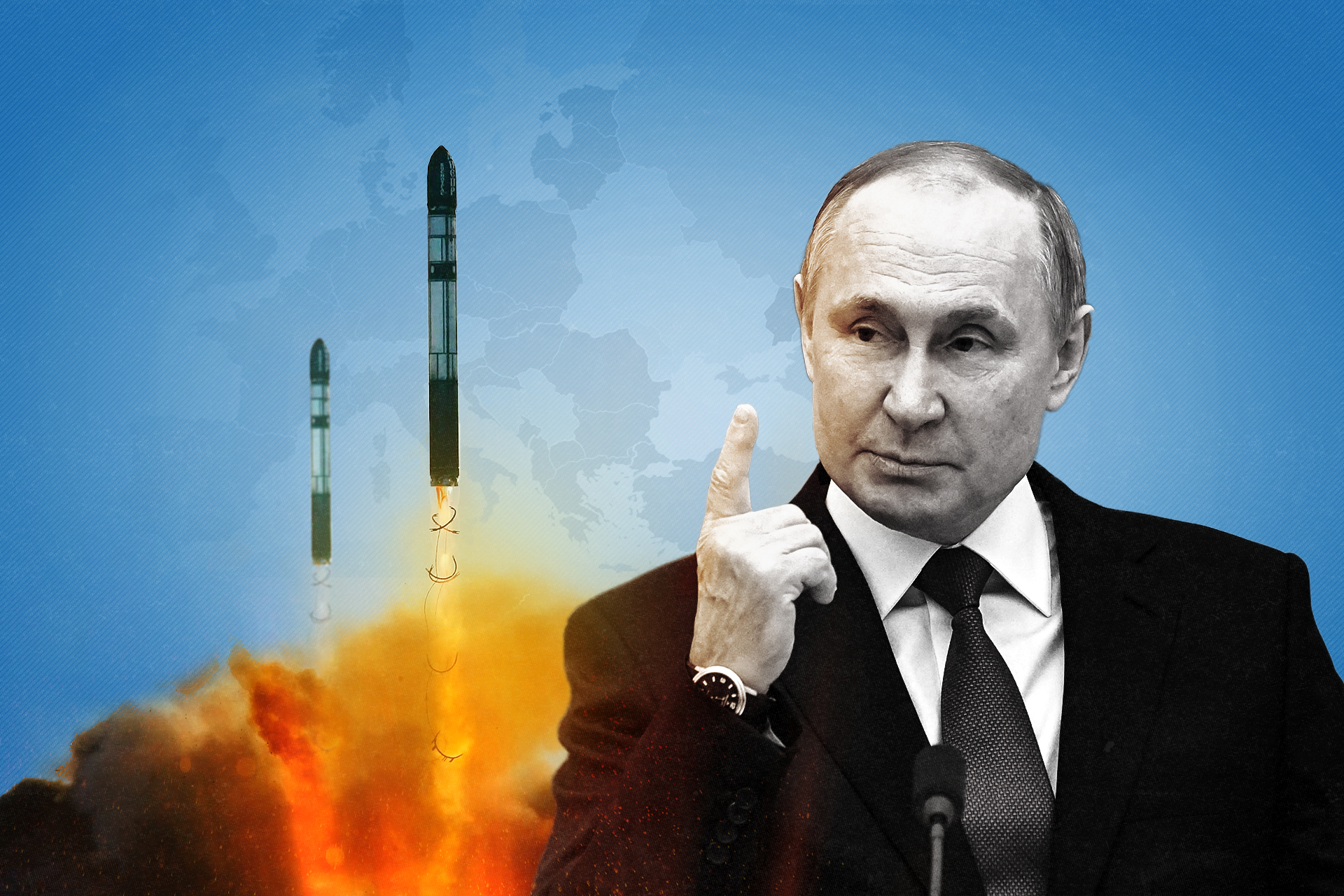The Economist asked if it is possible to tell if Russian President Vladimir Putin is on the verge of crossing the nuclear brink?
And she said in
a report
that while NATO is conducting nuclear exercises, Western spies are watching Russian warheads for any indication of their movement.
She added that Western spies may say they have insight into the Kremlin's decision-making process, and as for satellites and other technical means, much will depend on what weapons Moscow decides to use.
Control of strategic nuclear arsenals in place
The report shows that Russia and America's arsenals of long-range "strategic" weapons are closely monitored under the New Start Treaty, which defines each side 1,550 warheads deployed on missiles, bombers and submarines.
But the problem is that many of these warheads are placed on high alert and can be launched without warning, and satellites and ground-based radars will not be able to detect and track ballistic missiles until after they are launched, and it will be difficult to detect low-flying cruise missiles.
However, the use of these weapons is unlikely, as they carry a very high risk of provoking a war with NATO.
The most feasible option would be a limited nuclear strike using one or more of Russia's 2,000 "tactical" weapons, which generally have a smaller explosive power and a shorter range, given that NATO has about a hundred such weapons in Europe.
Nuclear warheads need to be moved to planes and missiles
Russia's tactical warheads are kept in dozens of storage locations, separate from planes and missiles that might be needed to deliver them, the magazine said.
Thus preparations for their use must be detectable.
She explains that the key to detection is satellite monitoring and other means of the movement of warheads from storage sites, as the warheads will be transported by train or trucks, and guarded by elite units from the Main Directorate No. 12 responsible for maintaining warheads, and they will be accompanied by firefighting vehicles and special recovery vehicles.
Military units that may use these weapons may also exhibit unusual activity.
All this would generate an even more intense electronic chatter.
She added that Western countries know the tell-tale signs because they worked with Russia for decades after the Cold War to improve the safety of its nuclear arsenal under the Co-operative Threat Reduction program, and some specialized Russian equipment and procedures were designed with the help of Western experts.
Other possibilities
The report quoted William Moon, a veteran of the CCP, that it is almost certain that significant movement of warheads will be detected.
But for a limited tactical display, Russia could try to get one or two warheads hidden in regular trucks.
Detecting such a move would be to guess which side the coin will rest on after tossing it in the air.
Once installed on mobile rocket launchers and hidden in forests, tactical nuclear weapons would be hard to find, notes Pavel Budwig of the United Nations Institute for Disarmament Research, a think-tank in Geneva.
James Acton of the Carnegie Endowment for Peace argues that concealing the movement of warheads would be against Russia's goal. "Putin wants us to know he's preparing for nuclear use. He'd rather threaten to use nuclear weapons and extract gains than actually use them."

